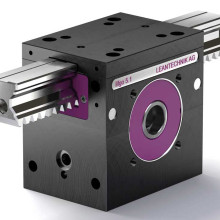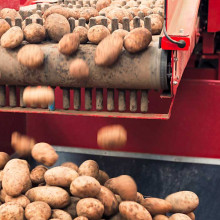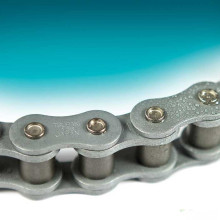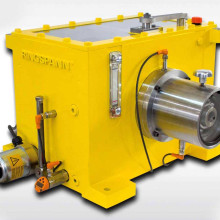Conveyor chain for triple service life in fiberglass wool production
- Details
- Hits: 5293
A manufacturer of insulating fiberglass wool found out that premature wear of the components installed in a conveyor system conveyor chain was responsible for the declining product quality. He replaced the chain with a premium chain from the leading manufacturer of drive technology products Tsubaki. This not only solved the quality problems, but also tripled the service life of the system.

Contents
- Technology for fiberglass wool production
- Application-specific solution
- Installation and result in numbers
Technology for fiberglass wool production
Maximizing production and reducing costs actually requires that the systems in this industry are equipped with the best machine components and are subjected to regular maintenance. Unfortunately, in practice this is not always the case Success Story shows.
To manufacture the Fiberglass insulation mats Molten glass is poured into a rapidly rotating perforated container. The horizontal streams of glass ejected are converted into fibers by a downward blast of air or hot gas. These fall onto a conveyor where they combine into a fluffy mass and are sprayed with a binding agent. Two conveyors then compress the fiber mats to the desired thickness before they are pushed into the oven for the binder to harden.
Construction of the conveyor
The design of the conveyors is such that a cross member is attached to each chain link on a large chain. These cross beams form a platform for transporting the fiberglass mat. Shortly before the mat enters the oven, a second conveyor is added. Both press the mat together and hold it in place as it passes through the oven. After the binder has hardened, the mat has a uniform thickness and cools until it is packaged ready for sale.
The original conveyor chain
 The original conveyor chain lengthened very much and showed high roller wear, for which several factors were responsible: The chain lubrication proved to be suboptimal due to the high operating temperature; the chain was difficult to access for necessary maintenance and there was a risk of excessive lubrication which could contaminate the fiberglass mat.
The original conveyor chain lengthened very much and showed high roller wear, for which several factors were responsible: The chain lubrication proved to be suboptimal due to the high operating temperature; the chain was difficult to access for necessary maintenance and there was a risk of excessive lubrication which could contaminate the fiberglass mat.
The lengthening of the conveyor chains led to increased gap dimensions between the cross members and thus affect the quality of the fiberglass mat. While the fiberglass wool is compressed by the panels, the flatness of the surface is within a certain tolerance range.
If the panels are too far apart and the distance between the panels is too large, the glass wool can be pressed into the gap and form bulges. The flatness of the surface is disturbed at regular intervals by transverse ridges. As a result, the chain only offered a service life of two years and then had to be replaced.
Application-specific solution
The manufacturer of drive chains and conveyor chains assessed the application and investigated the causes of early wear on the conveyor chain. The main thing was that insufficient chain lubrication responsible. The high oven temperatures and the proximity of the chain to the finished product did the rest. The drive specialists then tailored the chain to the application and equipped it with some special features:
Hardened, chrome-plated bolts and a molybdenum disulfide (MoS.) are now used2) -Lubricant for industrial chains, which ensures high lubricity even beyond the temperatures present in the oven. This dry lubricant Furthermore, there is no risk of contamination of the fiberglass mat during the manufacturing process.
Tsubaki supplied suitable ones to complement the conveyor chain sprockets with inductively hardened teeth. By using the highest quality Materials and the special hardening technology of the products, wear in the sprocket system is reduced to a minimum.
Installation and result in numbers
Engineers from the drive specialist installed the new conveyor chain together with the fiberglass wool manufacturer. They placed particular emphasis on the best possible alignment of the transport chains, which has a direct impact on their service life. Since then, the chain has literally been running like clockwork for more than six years. This means it lasts three times longer than its predecessor.
Overall, the cost savings with a six-year term for the customer are significant: For the replacement of the conveyor chain, the machine had to be taken out of service for three weeks. In the past, annual maintenance costs amounted to 170.000 EUR, including the cost of production loss. The new chain can only be exchanged with this user every six years. This reduces the annual maintenance costs to a maximum of 62.000 EUR.
Over a period of six years, the customer could not only save about 650.000 EUR, but also gain six weeks of production time. In addition, the chain provides a consistent product quality.
You might also be interested in...

Roller chain for the high demands of food technology

Flexible solar modules, rotating solar panels and other photovoltaics

rack gear | Highly accurate for precise movements

Potato harvester reliable again after conversion from freewheel

Drive and conveyor chain | Roller chains for industry

Freewheel clutch | Backstop and overrunning clutch

Angela Struck is editor-in-chief of the development scout and freelance journalist as well as managing director of Presse Service Büro GbR in Ried.
